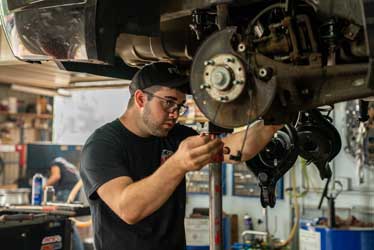All Categories
Featured

2 crucial services that are often overlooked yet have a considerable effect on tire longevity and efficiency are tire rotation and positioning. Allow's dive right into what tire rotation and positioning are and why they're vital for your cars and truck.
What Is Tire Rotation? Tire turning is the procedure of relocating your tires from one position to one more to guarantee they use uniformly. Given that your automobile's tires work at various prices relying on their position (front tires versus back tires), rotating them routinely helps to distribute the wear evenly, resulting in a longer life-span for your tires.
Tires on the front axle have a tendency to use more rapidly than those on the back axle, specifically in front-wheel-drive autos, where the front tires deal with both guiding and power. On the various other hand, back tires may put on unevenly depending upon the car's weight circulation and driving problems. By revolving your tires every 6,000 to 8,000 miles (or as advised by the producer), you'll make sure a much more balanced wear pattern.
What Is Tire Placement? Tire alignment, likewise referred to as wheel alignment, describes changing the angles of your automobile's wheels to the supplier's specifications. Correct alignment ensures that your tires are pointing in the right direction, and it helps optimize tire life and enhance automobile handling. There are three major elements of alignment: camber, wheel, and toe.
Camber refers to the tilt of the tires from the front of the automobile. If your tires are tilted also much inward or external, it can trigger irregular wear. Caster describes the angle of the guiding axis when viewed from the side of the car. This influences the stability of the guiding, particularly when driving directly. Toe refers to the angle at which the tires direct internal or exterior when seen from above. This affects how your vehicle tracks when traveling. An appropriate placement guarantees that all four tires are aiming directly in advance and are tilted correctly. Imbalance can result from striking potholes, curbs, or just from the wear of suspension elements over time.
Why Tire Rotation and Positioning Matter. Extended Tire Life. Both tire turning and positioning aid protect against unequal tire wear. When your tires put on evenly, they last longer, which can conserve you cash in the long run by lowering the requirement for premature substitutes.
Improved Security. Correct tire rotation and alignment boost automobile stability and handling. Misaligned tires or unevenly used tires can adversely impact your capability to steer and stop your car, specifically in emergency situation situations. Regular maintenance guarantees your tires carry out ideally, providing a much safer driving experience.
Much Better Gas Effectiveness. If your tires are not lined up appropriately, they might drag versus the roadway surface, triggering resistance. This additional friction can reduce fuel efficiency, triggering your automobile to take in even more gas. Routine tire alignment makes sure that your automobile relocates effectively, boosting gas mileage.
Enhanced Convenience. Imbalance or unevenly used tires can cause a rougher experience, as your car may draw to one side or trigger resonances. By keeping your tires rotated and lined up, you'll appreciate a smoother and more comfy driving experience.
Signs That Your Tires Required Turning or Positioning. It's vital to stay sharp for any type of indicators that your tires need rotation or alignment. Watch out for these usual indicators:
Irregular Tire Wear: If you discover that a person tire is significantly more worn than the others, it may be time for a rotation or positioning. Steering Pull: If your automobile draws away while driving right, this might suggest imbalance. Resonances: If you feel vibrations in the steering wheel or the auto itself, it could be an indicator of imbalance or unequal tire wear. Squealing Tires: Uncommon tire sound could additionally indicate improper alignment or the requirement for a tire rotation. Exactly how Often Should You Revolve and Align Your Tires? Tire rotation ought to typically be done every 6,000 to 8,000 miles or as defined in your car's proprietor's guidebook. It's an excellent concept to revolve your tires during every oil adjustment, as this will certainly help you remain on top of routine upkeep.
When it comes to positioning, it doesn't need as frequent solution. Commonly, alignment ought to be checked a minimum of when a year or whenever you notice problems like drawing to one side or resonance. You may also require placement if you have actually hit a large crater or curb, which can throw your wheels out of alignment.
Final Thought: Keep Your Tires in Top Shape. Tire turning and positioning are crucial solutions that keep your lorry running smoothly, safely, and efficiently. By making the effort to have your tires turned and lined up routinely, you're purchasing your car's performance and longevity, while likewise enhancing your security when traveling. Stay proactive with tire maintenance, and your auto will thanks with far better gas economic climate, enhanced handling, and extended tire life.
Latest Posts
Find Out How Your Partner at WyHy Maximizes Your Savings on Loans and Savings
Discover Montclare Auto Repair’s Top Car Care Solutions and Why Drivers Trust Them
Recognizing When Your Car Needs Expert Auto Repair at Montclare Auto Repair
More
Latest Posts
Find Out How Your Partner at WyHy Maximizes Your Savings on Loans and Savings
Discover Montclare Auto Repair’s Top Car Care Solutions and Why Drivers Trust Them
Recognizing When Your Car Needs Expert Auto Repair at Montclare Auto Repair